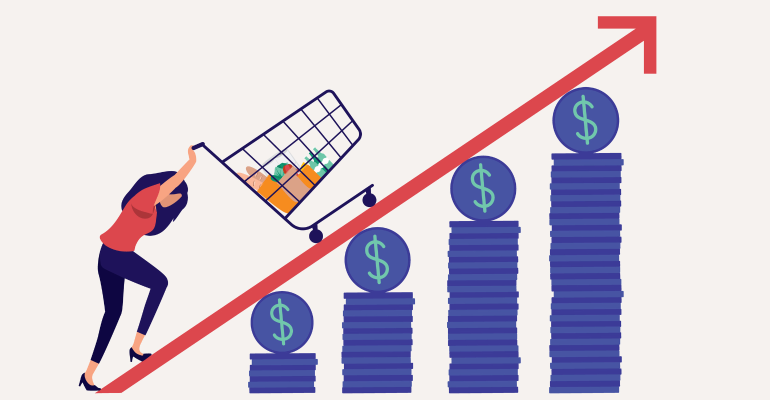 Scott Moses is a partner and head of grocery, pharmacy and restaurants investment banking at Solomon Partners, an M&A investment banking advisory firm. He writes a quarterly column for Supermarket News about sector trends, including operating, valuation, and strategic dynamics.
Scott Moses is a partner and head of grocery, pharmacy and restaurants investment banking at Solomon Partners, an M&A investment banking advisory firm. He writes a quarterly column for Supermarket News about sector trends, including operating, valuation, and strategic dynamics.
As we head into an election year, more topics than ever seem to be fair game for political discourse. Food inflation is an important subject, as it has been incredibly difficult for American families.
However, there have been widespread misperceptions and numerous misstatements about food inflation’s causes. Grocers and the administration have been accused of being responsible; this is simply not true. It reminds me of a John Adams quote: “Facts are stubborn things; and whatever may be our wishes, our inclinations, or the dictates of our passions, they cannot alter the state of facts and evidence.”
So, amid the frenzy of endless debate, with the words of a founding father in mind, let’s set the record straight about food inflation, using facts and evidence. Here are inflation’s three principal causes:
1. Supply chain disruptions.
Covid snarled the global supply chain, from manufacturing output reductions to shipping delays and countless worker absences. Ecological challenges, including extreme weather and Avian flu, meaningfully impacted the food supply. Together with widespread Covid fear, these shortages sparked panic buying. All of these factors drove food inflation to 8.6% in February 2022, before Russia attacked Ukraine.
2. Russia’s Ukraine invasion.
Before the invasion, Russia and Ukraine were responsible for roughly 30% of global grain and fertilizer exports. Russia is also a significant fuel exporter. When production and exports all but shut down and demand for non-Russian energy increased, there was even more food and energy cost pressure. For example, wheat prices increased 34% per metric ton from February 2022 to May 2022, beyond already-elevated levels of supply disruption. As a result, food inflation soared, peaking at 13.5% in late 2022. In the past year, much of this supply has been restored, but there remains considerable volatility given continued geopolitical hostilities.
3. Food manufacturer price increases to grocery customers.
Here is the big one. Food manufacturers drive price dynamics at grocery stores, from national / discount grocers like supercenters, club stores and dollar grocers to online grocers and supermarket grocers. For example, the collective gross margin of P&G, Mondelez, Kellogg’s and Coca-Cola increased over 1.5% in the past year – a significant dollar amount – as their company leaders plainly discussed on earnings calls their continued ability to pass along price increases to customers.
Dirk Van de Put, Mondelez’ CEO, said in the company’s Q2 2023 earnings call, “We’ve increased prices more aggressively… We increased prices in August, in January and another one later in Q1.” Andre Schulten, P&G’s CFO, said in their Q2 2023 earnings call, “Pricing has been a core component of our growth for 18 out of the last 19 years.” This dynamic has exacerbated grocery store price inflation across the country.
American grocery in 2023 has never been more fragmented, with an unprecedented degree of choice, convenience, and price transparency. Hyper-competitive national / discount grocers like Walmart, Costco, Target, Aldi, and Dollar General have driven grocery prices down over the past 20 years; supermarket grocers have needed to follow suit in order to retain customers, sometimes beyond sustainable levels for many stores. Supermarket grocers now comprise less than 40% of American grocery share, and this is falling every day.
While food inflation is finally moderating, it remains a severe challenge for most Americans and its causes should be more clearly – and correctly – understood.
There are enough subjects in American politics where some people exaggerate, mislead, and manipulate to try to drive support and votes; let’s keep that out of our grocery market, which is a lifeline to millions of Americans and simply too important to be a political football.





